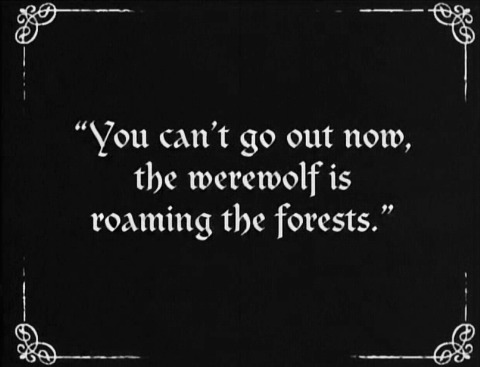#SO HERE'S MY BIG OL HANDBOOK TO WEREWOLFRY
Explore tagged Tumblr posts
Photo



LYCANTHROPY
“I'll ask of the berserks, you tasters of blood,
Those intrepid heroes, how are they treated,
Those who wade out into battle?
Wolf-skinned they are called.”
- Haraldskvæði, by Thórbiörn Hornklofi
“He was straight transfourmed into the likenes of a greedy devouring wolf, strong and mighty, with eyes great and large, which in the night sparkeled like unto brandes of fire, a mouth great and wide, with most sharpe and cruell teeth, a huge body, and mightye pawes."
- The Trial of Peter Stumpp, The Werewolf of Bedburg
The origins of the werewolf, one of the most maligned magical creatures of this or any time, remain a mystery. It has been proposed that, rather than merely a Dark Curse inflicted by some hateful warlock, lycanthropy is a relic of the Viking berserkergang - meaning that this frightful condition once had brutal purpose on the field of battle. These possibilities, while discussed over brandy at very particular clubs as a subject of historical curiosity, are wholly irrelevant. The popular perception of werewolves as mindless man-eaters has become so entrenched that there seems little likelihood of change. Between passed down prejudices, horrific depictions across magical and muggle media, and stacks of mis-informed, fantastical, and simply hateful so-called “academic�� treatments of the subject, lycanthropy remains a thoroughly demonized affliction.
The most insidious of the myths surrounding lycanthropy is that this curse progressively destroys the victim’s capacity for moral sense, leaving a werewolf thoroughly vicious, animalistic, and evil. Another is that they do, in fact, maintain their human minds while transformed - that their murderous behaviours under the full moon are genuinely their doing, the acting-out of grudges and sadistic urges. The “infectious” nature of the condition is also grossly exaggerated, confusing when and how the curse can be passed on. So is the power of werewolves - while they are certainly formidable creatures, they are not invincible, insensitive to pain, or unable to feel fear, as the legends often suggest.
Tragically, some of the very worst of the stories are true.
During the full moon, werewolves will preferentially hunt, kill, and even eat human beings, magical and muggle alike. They appear to be driven to attack any person they encounter, and are as likely to leave the corpse strewn meaninglessly across the countryside as to consume it. Their human understanding vanishes completely, from moonrise to moonset. There is no reason to appeal to. They do not recognize or respond to anyone they know or love, while human. Werewolves are unable to fully recall the events of the full moon, though many “authorities” insist that this is simply a ruse - you know werewolves. Those creatures surely aren’t above lying to escape proper judgment for their hideous crimes. Are they?
It is extremely difficult to dissuade an attacking werewolf, barring substantial muggle firepower or excellent spell-casting. When transformed, werewolves are frighteningly resistant to many lower level spells, such as the Full Body-Bind Curse or Stinging Jinx. This is due, presumably, to the sinister magic of their being. They are also physically resilient, able to withstand a great deal of pain and injury in their frenzied attempts to slaughter anyone they come across.
When contained, with no human prey, werewolves become incredibly agitated. Their tendency to bite and scratch themselves is often pointed to as evidence of their rabid nature - clearly, they are so senselessly devoted to destroying human beings that they can’t stand the fact that there remains even a shred of humanity inside them. More sympathetic views, largely belonging to wix who keep dogs, suggest that this is merely an expression of deep distress. This interpretation is largely ignored.
THE BITE
While rumours persist that lycanthropy can be spread through scratches, or even through scratches and bites delivered while a werewolf is in human form, most magi-medical professionals know that only the bite of a transformed werewolf can transfer the affliction, although a milder “infection” from non-transformed bites does sometimes occur if the wounds are deep enough.
One of the more unusual aspects of this curse is that a scratch or bite from a werewolf will not clot and stop bleeding unless properly cared for - meaning the victim will invariably bleed to death without magi-medical attention. A solution of ground silver and oil of dittany is the only potion known to seal wounds inflicted by a werewolf. Werewolves themselves are, of course, immune to this particular effect, and their wounds - inflicted by their own claws and fangs, or those of other werewolves - will clot and heal normally. With the benefit of time and magical treatment, these scars can disappear completely.
However, the scars left by the bite which inflicts the curse will scar permanently; no magical means are known to be able to remove this curse-mark. Likewise, if an “uninfected” human is scratched by a transformed werewolf, these injuries will also leave irremediable curse-scars.
While muggles have certainly been bitten by werewolves, no survivors are recorded. This is believed to be a reflection of the magical nature of lycanthropy; while the language of disease is commonly used to discuss the affliction, this vocabulary is inaccurate, absorbed from the muggle world. Werewolfry is a curse, and, apparently, an amount of innate magic is needed in order to survive it at all.
There are no known cases of a wix surviving a werewolf’s bite without suffering the curse. There are tales of these unfortunate victims begging to be left to die, and many stories of mediwix simply refusing to treat them at all. In light of an unusual - but still small - uptick in werewolf bites in recent years, St. Mungo’s has had to establish and enforce a policy which requires their staff to provide treatment to these patients. This has sparked some controversy, but the hospital’s administration has quieted critics by clarifying that this is a matter of containing risk - and ensuring proper registration.
APPEARANCE
There’s no easy, sure way to tell an untransformed werewolf from anyone else, despite what the stories might say. At most, the only common feature is a tendency to age or grey prematurely; but “regular people” do that too, don’t they? While the scars left by a werewolf bite are quite striking, given their size and severity, there’s nothing so specifically unusual about them that would give away their origin. However - werewolves will carry scars and injuries across their shapes, meaning that these are, potentially, a means of identifying the local lycanthrope.
Once transformed, you could mistake a werewolf for a wolf - if, at least, you were looking at one that was very still, from quite far away, in the dark, through some foliage, and had never in fact seen an actual wolf, ever. Werewolves are generally described as unsettling at an instinctive level, inspiring a particular and intense kind of fear due to their uncanny appearance.
A changed werewolf is as unidentifiable to others as they are to it. They are gangling, unnatural looking creatures, and generally move about on all fours. Their heavily clawed forepaws remain eerily hand-like, but not so much as to be capable of grasping objects. The canine-like head is unusually proportioned, with a slightly shorter snout than a wolf might possess. The eyes of a werewolf feature largely in witness accounts, in which they tend to be described as profoundly disturbing, possessed of human-like murderous fury. From muzzle to tail, they are covered in thick fur, generally similar in colour to their human hair.
When exposed to light, a werewolf demonstrates the eye-shine associated with a well-developed tapetum lucidum; their night vision is, unfortunately, excellent. While some experts state that werewolves are entirely red-green colour blind, much like dogs, even when in human shape, this is false. There is, however, reason to believe that a transformed werewolf experiences this effect to some extent.
As one might expect, werewolves heal somewhat quicker than non-werewolves - from both magical and mundane injuries. This is simply a matter of survival, given the violence of their monthly transformations. Silver, despite the muggle myths, has no particular effect on werewolves in any shape.
MAGICAL USE
The fur, saliva, blood, organs, claws, and fangs of werewolves are known to have considerable magical value. However, given the difficulty in collecting such material, and the limited time frame for useful harvest, these ingredients are very rare; their usefulness to potion-makers and wand-crafters is not thoroughly tested, and mostly hypothetical, due to the infrequency of experiments and the questionable nature of historical records.
Trade in werewolf parts, while inherently predatory, is very, very lucrative - and has never been regulated by the Ministry.
NOTES
Lycanthropy is sometimes referred to as werewolfry, to avoid confusion with the psychological condition; that’s more an academic distinction than a common one, though.
#revelio.the affliction#SO HERE'S MY BIG OL HANDBOOK TO WEREWOLFRY#ENJOY#there is some canon divergence but it's all been cleared with the admins and such so HERE WE BE
5 notes
·
View notes